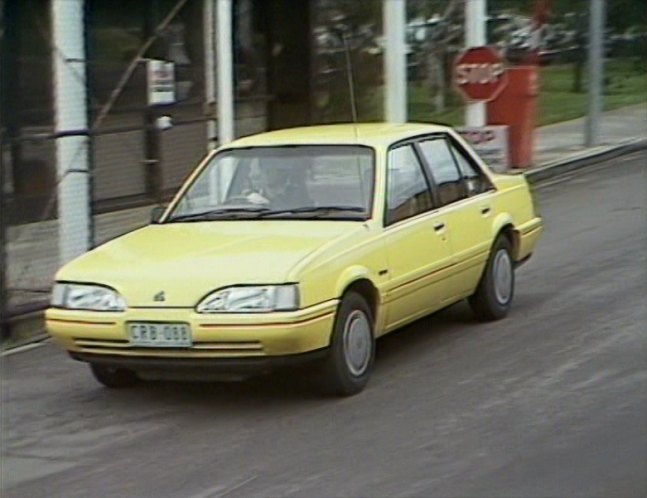Holden Camira JD repair manual 1984-1985
Holden Camira JD Series Gregory's Service and Repair Manual 1984-1987NEW - paperbackHolden Camira JD 1984 - 1987 Gregorys Owners Service & Repair Manual Covers Series: JD Models: Camira Engine capacity: 1.6 litre 1.8 litre (4 cyl) Trim levels: 1.6 litre 1.8 litre (4 cyl) Other Holden Car Repair Manuals click here
|
Production 1984–1987 (36,953 produced)
Engine(s) 1.6 L Camtech I4
1.8 L Family II I4
Transmission(s) 4-speed manual
5-speed manual
3-speed automatic
The second series JD Camira, released in 1984 received a facelift, with a more aerodynamic front-end and the absence of a conventional front grille. The differences were at first cosmetic, but a few months after the launch of the car, the engine was upgraded from 1.6 to 1.8 litres, and to multi-point fuel injection. These changes combined allowed the engine to deliver 83 kilowatts (111 hp). The new 1.8 litre engine was mated with a five-speed manual transmission, as opposed to the four-speed fitted to the 1.6. However, during mid-1986, new emissions regulations required that all cars manufactured in Australia to run on unleaded petrol. This forced another reworking of the engine (all variants prior to this ran leaded petrol), during which time Holden was operating at a loss. The result was that Holden dropped the multi-point injection and reverted back to a single-point, akin to a carburettor, and altered the tuning of the engine to suit. Power output was reduced by 20 kilowatts (27 hp) to 63 kilowatts (84 hp). This engine was also used in Holden's locally manufactured compact car, the LD Astra (1987–1989), a badge engineered Nissan Pulsar (N13; 1987–1991), as well as the Pulsar itself. This was the result of a model sharing alliance between Holden and Nissan at the time, where the Nissan body was used in conjunction with GM powertrains. Running on unleaded petrol, this engine had an output of 79 kilowatts (106 hp). The Pulsar's 1.8 litre engine contained the same basic internals as the JD Camira's 1.8 litre engine, with the main exception being the block casting and smaller ports/valves on the head, and smaller intake manifold. Both the Camira and Astra/Pulsar engines were powered by a Delco Electronics engine control unit. This caused problems of its own, as with age, the fine tolerance of the circuitry and componentry have a tendency to fail unexpectedly, and on failing, the engine will cease to operate, or operate with a crippling loss of power due to incorrect tuning and fuel delivery. The external engine mounts are better placed on the Pulsar, and hence result in longer engine mount life.
In New Zealand the second generation Camira was marketed as the Camira JJ. This consisted of two entirely different J-cars: the sedan version was a rebadged version of the Isuzu Aska from Japan. This decision was made by General Motors New Zealand as sales figures of the Camira JB were poor for this market, however the wagon version which was built and sold in Australia was retained from the previous generation and assembled locally.
[edit] Specification levels
* SL, SL/X, and SL/E: as for JB.
* Executive: introduced in 1986 as an option pack for the SL/X. The Executive was first seen on the VK Commodore in 1984.
* Formula: first seen on the JD model, the Formula pack was optional to any model which had special pin striping and side skirts, this pack sold in limited numbers.
Holden Camira JD Series Gregory's Service and Repair Manual 1984-1987 1985 1986

 0 Items (Empty)
0 Items (Empty)














 >
>